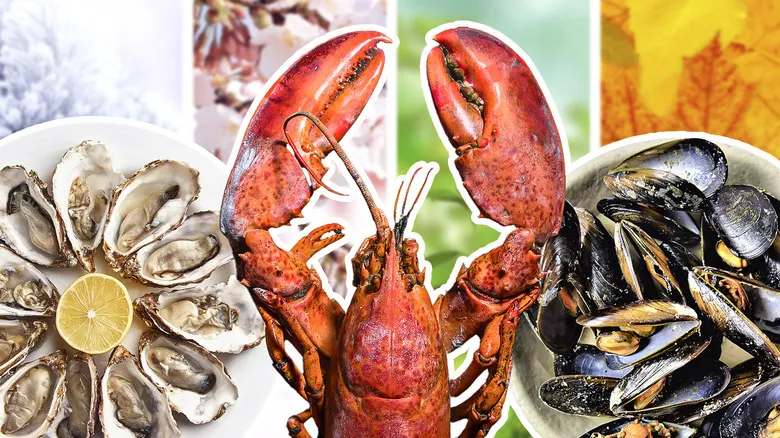Oysters

When it comes to wild oysters, the season typically "starts in September and wraps up in April," according to Chef Terri Dien. In contrast, farm-raised oysters are available year-round, always fresh. Chef Sammy Monsour highlights that oysters are among "the cleanest and healthiest seafood options available. They filter out pollutants, resulting in cleaner water." This positive assessment emphasizes how safe (and tasty) these remarkable marine creatures are to consume.
Renowned seafood chef Barton Seaver notes that "the biology of an oyster changes when it shifts its focus from growth to reproduction. During this time, you’ll find an increase in glycogen — a fatty sugar — which makes the oyster richer and slightly sweeter." Additionally, you may notice a softer texture, quite different from the crunch typically found in New England's cold-water oysters.
Whether you’re enjoying wild or farm-raised oysters, or tasting them during their reproductive phase, Monsour emphasizes a universal truth: "Raw oysters are more than just a delicacy — they represent a cultural experience. The joy of sharing a platter of fresh, briny oysters is unmatched." So, grab a dozen, add a squeeze of lemon, and indulge in the ocean's finest flavors any time of the year.
Clams
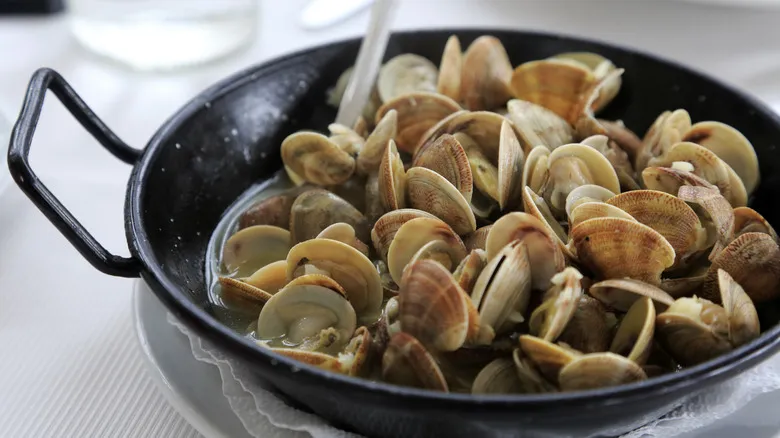
"Nowadays, the majority of clams we savor are sustainably farmed, ensuring they are fresh and accessible throughout the year," Chef Sammy Monsour shares. This transition to farm-raised clams has made it easier than ever to enjoy these adaptable shellfish whenever you desire. Grown in controlled settings that provide ideal conditions for their development, farm-raised clams are not only fresh but also more environmentally friendly than wild harvesting. While farmed seafood sometimes faces criticism, the truth is that this method alleviates pressure on wild populations and helps maintain healthier marine ecosystems.
Wild clams, which remain a delicious option we can't resist, are most abundant during the cooler months, from September to April, marking the traditional shellfish season. The timing of the harvest can vary depending on the region and local regulations aimed at protecting clam populations and ensuring their sustainability. Wild clams are celebrated for their distinct flavors, shaped by their natural surroundings, including the salinity and temperature of the water in which they thrive. Additionally, they have very low mercury levels, making them an excellent choice for seafood enthusiasts.
Mussels
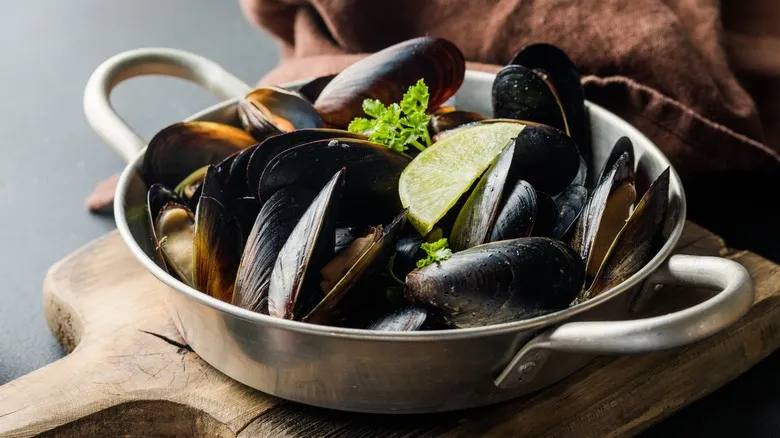
Wild-harvested mussels exhibit a seasonal pattern similar to clams, peaking from September to April, as noted by Chef Terri Dien. During this timeframe, wild mussels are at their prime, showcasing rich flavors and a satisfying texture. The cooler waters of these months enhance their robust taste, which is influenced by their intense summer feeding period. During this time, they mature, cling to rocks, and consume large amounts of plankton. By fall and winter, the adult mussels are well-nourished and ready to spawn, making this the ideal time for harvesting. Winter mussels are sweeter and more succulent, boasting a delightful plump and creamy consistency. Dien particularly appreciates the green-lipped mussels from New Zealand, describing their flesh as "soft, sweet, pale, and peachy-colored."
In contrast, farm-raised mussels are available year-round. These mussels are grown in controlled environments that promote sustainable practices, ensuring a consistent supply of fresh, high-quality mussels. Their sweet and tender flesh is versatile, perfect for everything from simple steamed dishes with garlic and herbs to rich seafood stews, delivering a taste of the ocean to your table no matter the season.
Scallops

Scallops stand out from other shellfish when it comes to their seasonal availability. Terri Dien points out that they are primarily "wild-caught or harvested," with peak seasons differing by location. In the Pacific, scallops are at their best from July to September, as the warmer waters enhance their sweet, delicate flavor and tender texture. In contrast, the North Atlantic's prime season spans from October to March, during which scallops become firmer and more flavorful, benefiting from the nutrient-rich waters of the preceding months.
While most people still enjoy wild-caught scallops, Barton Seaver highlights the emergence of a promising farm-raised scallop industry. He notes that this practice is "very environmentally responsible and even beneficial to the aquatic ecosystem." As a result, it is increasingly possible to savor scallops throughout the year. Farm-raised scallops are cultivated on underwater farms, where they filter plankton from the water, helping to maintain cleaner ocean environments. Their flavor profile closely resembles that of wild scallops, providing a consistent quality that works well in various culinary dishes. Whether you choose to simply sear them with a hint of lemon or incorporate them into a rich seafood pasta, scallops are a mild shellfish that appeal to nearly everyone.
Lobster
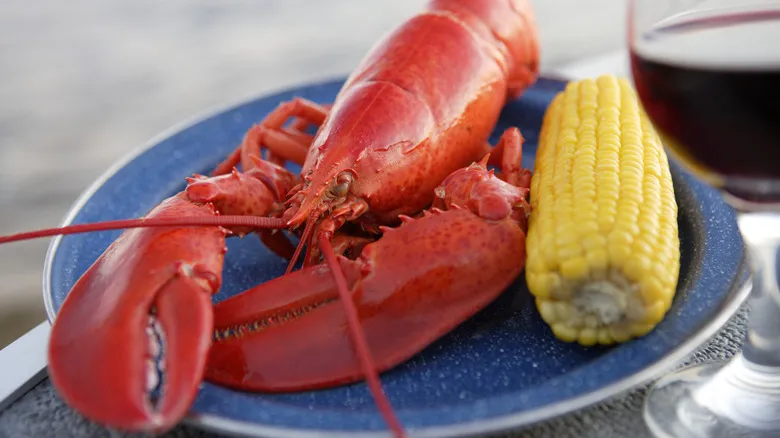
The seasonality of lobsters is closely linked to their molting cycles, which greatly influences their taste. Terri Dien notes that "late spring and fall" are the optimal times for harvesting lobsters, as this coincides with their growth phase. During these periods, lobsters have hard shells packed with meat, resulting in a firmer texture and richer flavor.
In contrast, during the summer months, lobsters go through molting, shedding their old shells to make way for new ones. This natural process results in softer shells, which significantly alters the texture and taste of the meat. Summer lobsters are referred to as "new-shell" lobsters. Barton Seaver points out the differences between hard-shell and new-shell lobsters, stating that while new-shell lobsters possess "a much sweeter flavor," they yield "slightly less meat." As a lobster aficionado and expert, Seaver describes new-shell lobsters as "a delicacy available for only a few months each year," and he truly values their milder taste.
The contrasting flavor profiles of hard-shell and new-shell lobsters offer a unique opportunity for lobster lovers to indulge in a variety of tastes throughout the seasons. The best part is that you don’t have to pick a favorite; you can enjoy both types depending on the time of year. This variation not only enhances the pleasure of eating lobster but also underscores the significance of timing in seafood harvesting, which affects flavor and texture.
Shrimp

Shrimp have specific seasons that vary by region. Chef Terri Dien notes that "wild-caught shrimp from the Gulf of Mexico have two distinct seasons," offering a range of choices for shrimp enthusiasts. Brown shrimp, celebrated for their rich flavor and adaptability, are generally available from May to June. In contrast, white shrimp, known for their sweet and tender flesh, are in season from August to December. These seasonal shifts allow consumers to enjoy shrimp at their peak freshness and flavor during these times. Meanwhile, farm-raised shrimp provide a consistent supply throughout the year, making them a convenient option regardless of the season. However, not all farm-raised shrimp are of the same quality. For instance, Dien expresses her disapproval of farm-raised shrimp imported from the South Pacific, citing concerns about how warmer climates can impact their quality.
Sammy Monsour agrees with Dien's views on shrimp health and safety, albeit for slightly different reasons. He emphasizes the importance of scrutinizing shrimp labels for additives, particularly cautioning against sodium tripolyphosphate (STPP). Monsour explains that this chemical is "often used to retain moisture, making the shrimp appear larger, but it also gives them a bitter, soapy flavor and leads to quick overcooking." For this reason, he always opts for shrimp from reputable sources that prioritize quality and sustainability. He specifically endorses Anchored Shrimp Co. in Georgia, stating that their shrimp "are the real deal — pure, flavorful, and free from harmful additives."
Crab
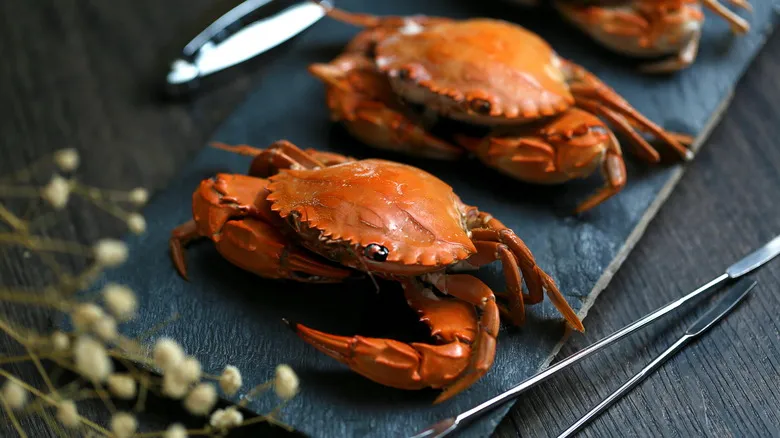
Crab seasons present a delightful array of flavors, with each crab variety contributing its own distinct characteristics throughout the year. The soft-shell crab season typically runs from March to June, varying by location. For instance, Lake Pontchartrain sees an earlier start, while the Chesapeake region follows a bit later. "It's all about water temperature," explains Barton Seaver. During this period, crabs molt, shedding their old shells, which makes their entire bodies, including the shell, tender and fully edible. This delicate texture is perfect for frying or grilling, resulting in a crispy exterior while the meat inside remains sweet and juicy. Soft-shell crabs are a seasonal treat that seafood enthusiasts eagerly await, and their limited availability adds to their allure.
On the other hand, the esteemed Dungeness crab, affectionately referred to as "the king of crabs" by Terri Dien, originates from the Pacific and is usually harvested from November to March. Dungeness crab is renowned for its sweet, succulent meat, which is rich and flavorful, particularly when freshly caught from coastal waters. Barton Seaver also lauds its "glorious" taste, emphasizing that the shorter season heightens its desirability, making it a must-try during its peak. The limited supply of Dungeness crab leads seafood lovers and chefs to strategically plan their menus around its prime months, relishing its savory, flaky meat that is perfect for everything from crab cakes to simple steamed dishes served with melted butter.
Crawfish
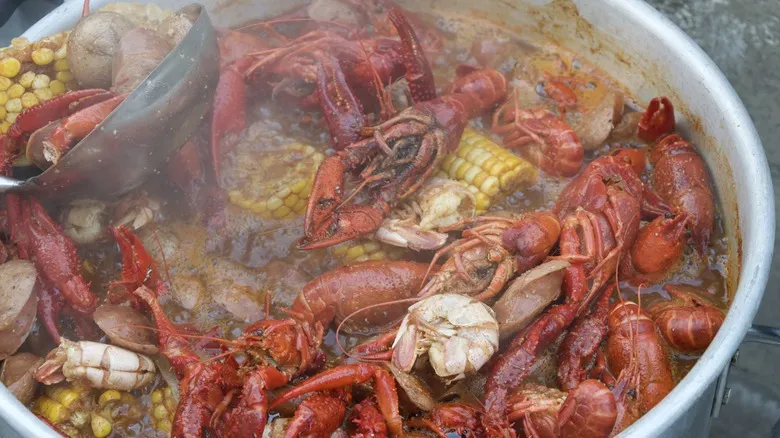
Crawfish, a cherished element of Louisiana's culinary scene, reach their peak season from late February to April. During this period, the water temperatures are just right for harvesting, and as Terri Dien notes, "crawfish are at their finest." The warming waters create an ideal habitat for crawfish to flourish, resulting in succulent, flavorful meat perfect for boiling, étouffée, and other traditional dishes. For seafood enthusiasts, this prime time is the ultimate opportunity to savor fresh, live crawfish, not just for the delicacy itself but also for the cultural experience. Sammy Monsour, a Southern native with a profound appreciation for the region's seafood heritage, loves to source crawfish during this season for festive gatherings and classic crawfish boils, where the fresh catch can be expertly seasoned and cooked. The excitement surrounding crawfish season in the South is tangible, with both locals and visitors eager to get their hands on these delectable crustaceans.
Yet, the conclusion of the peak season doesn’t mean you have to forgo crawfish altogether. Monsour values the availability of "frozen crawfish tail meat" throughout the year, offered by companies like Louisiana Crawfish Company. This high-quality, sustainably sourced option allows you to enjoy the flavor of crawfish whenever the craving arises, without significantly sacrificing taste and texture.
Recommended
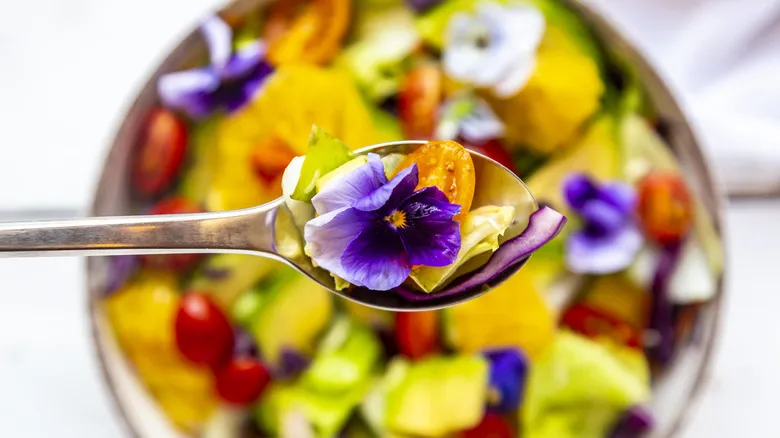
Edible Flowers: The Answer To Making All Of Your Meals A Little More Demure And Mindful

The Clever Hack You Need For Smash Burger-Inspired Tacos
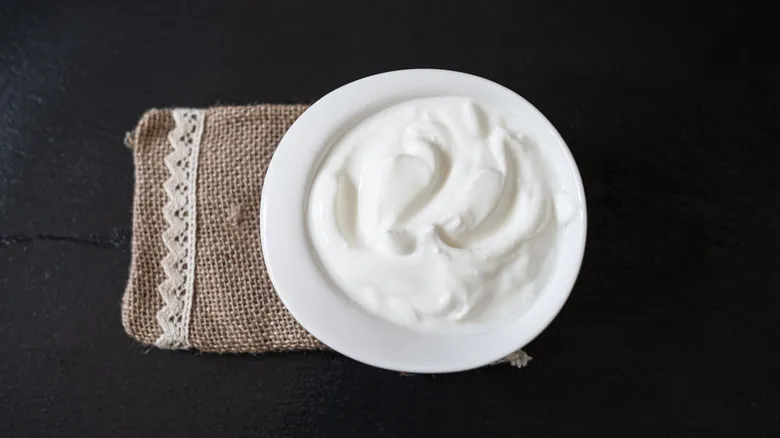
Transform Heavy Cream Into Sour Cream With One Easy Addition

The Clever Foil Hack To Make 2 Slow Cooker Dishes At Once
Next up

